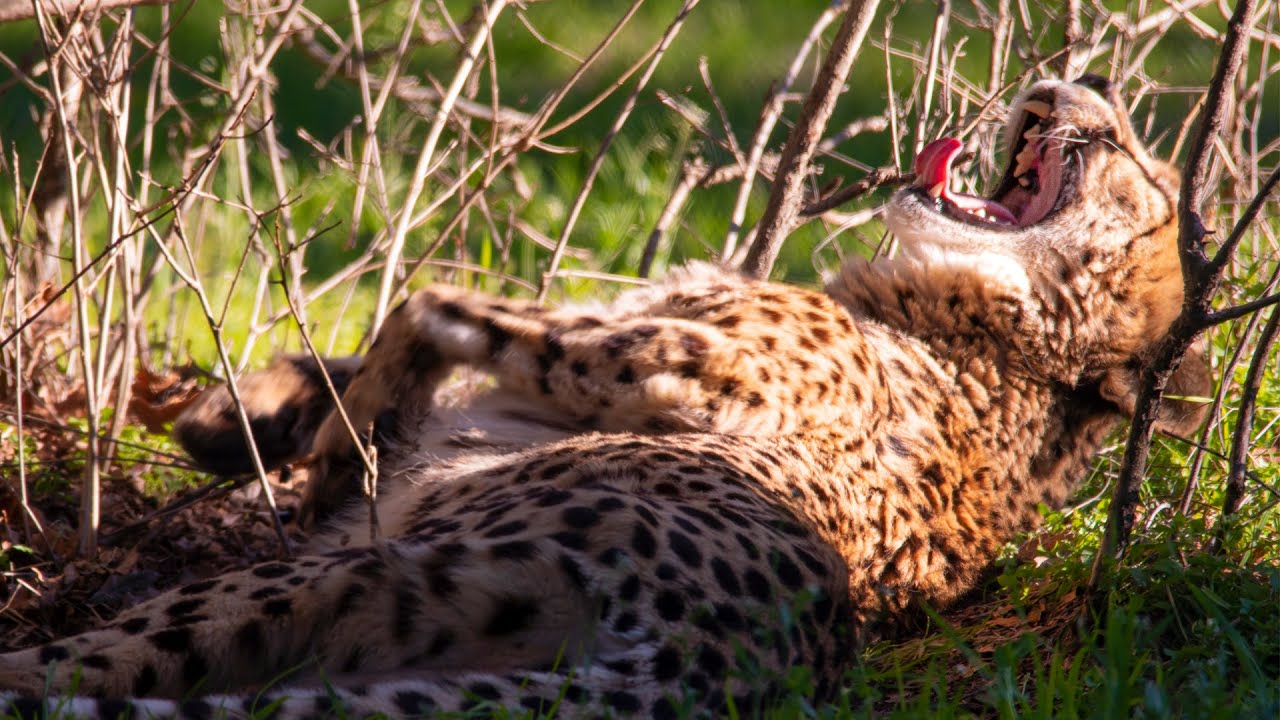- Understanding the remarkable agility and speed of the cheetah and its physiological adaptations.
- Examining the surprisingly sedentary lifestyle of the cheetah outside of its hunting activities.
- Analyzing the challenges cheetahs face in their natural habitats and conservation efforts to protect them.
- Exploring the balance between the cheetah’s energy expenditure and its evolutionary adaptations.
- Insights into cheetah management within zoological institutions and captive breeding programs.
Cheetahs hold the title as the fastest land animals, showcasing speeds of up to 60 to 70 miles per hour. Their incredible speed is a result of remarkable physiological adaptations. A large nasal passage and an enlarged heart enable efficient oxygen intake and rapid blood circulation during sprinting. The cheetah’s spine is flexible, acting like a spring each time it strides. Its lightweight frame, long legs, and specialized muscles contribute to its unparalleled speed and acceleration over short distances. The cheetah relies heavily on eyesight, often spotting prey from hundreds of meters away before initiating a fast, stealthy approach. This remarkable speed is typically sustained for only 20 to 30 seconds over distances of no more than 500 meters, making precision and timing critical to a successful hunt.
Interestingly, cheetahs lead surprisingly sedentary lives outside of their high-octane hunting excursions. They spend much of the day lying in the shade, preserving energy for their next hunt. This behavioral pattern reduces the risk of overheating and energy wastage. Their inactivity extends to periods after a meal when digestion demands a resting period. This lifestyle, characterized by bursts of intense activity followed by long rest, might appear lazy but is an adaptive survival strategy. The cheetah’s energy-saving tactics are crucial in environments where competition for prey is high, and resources can be scarce.
Cheetahs face significant challenges in their natural habitats, contributing to their status as a vulnerable species. Habitat loss due to human encroachment and agriculture has significantly reduced their living space. Additionally, the fragmentation of ecosystems restricts their movement and increases encounters with humans and other predators, such as lions and hyenas, which often compete for the same prey and can threaten their cubs. Conservation efforts aim to secure wildlife corridors that connect fragmented habitats, ensuring the cheetah’s ability to roam and hunt across large territories. Anti-poaching initiatives and community engagement are essential to the long-term survival of wild cheetah populations.
The cheetah’s evolutionary balance between energy expenditure and speed highlights the profound adaptations necessary for survival. Unlike other big cats, cheetahs rely on speed rather than strength to capture prey. Their semi-retractable claws offer better grip, while the tail acts like a rudder during high-speed maneuvers. Such adaptations are a testament to their specialized role in the ecosystem, yet these specialized traits also make them vulnerable to environmental changes. Maintaining this delicate balance is vital for the cheetah’s continued existence.
Zoo management plays a pivotal role in supporting cheetah conservation. Zoological institutions implement captive breeding programs to help maintain genetic diversity and bolster population numbers. These programs involve careful genetic monitoring and the exchange of individuals between institutions. Zoo environments are designed to simulate natural habitats, providing enrichment that encourages natural behaviors like stalking and chasing. Education efforts within zoos raise public awareness about the cheetah’s plight, fostering global support for their protection. Such initiatives complement in-situ conservation efforts, providing a safety net for the species.
Combining speed with strategic energy conservation, cheetahs exhibit a nuanced set of behaviors and adaptations essential for thriving in the wild. Their roles as hunters and their conservation needs present intriguing challenges for zoologists and conservationists alike. From their physiological capabilities to their valuable place within ecosystem dynamics, understanding and protecting cheetahs requires a multifaceted approach involving both science and compassionate stewardship. As we continue to learn about these fascinating animals, the urgency of conserving their wild populations becomes ever more apparent, reaffirming our commitment to preserving the diversity and balance of the world’s wildlife.
*****
Source Description
Cheetah are listed as vulnerable by the IUCN. Here at Fossil Rim we have been home to a breeding cheetah population for over two decades, and we are dedicated to the conservation of this incredible species. That however required us to learn how to speak their language.


